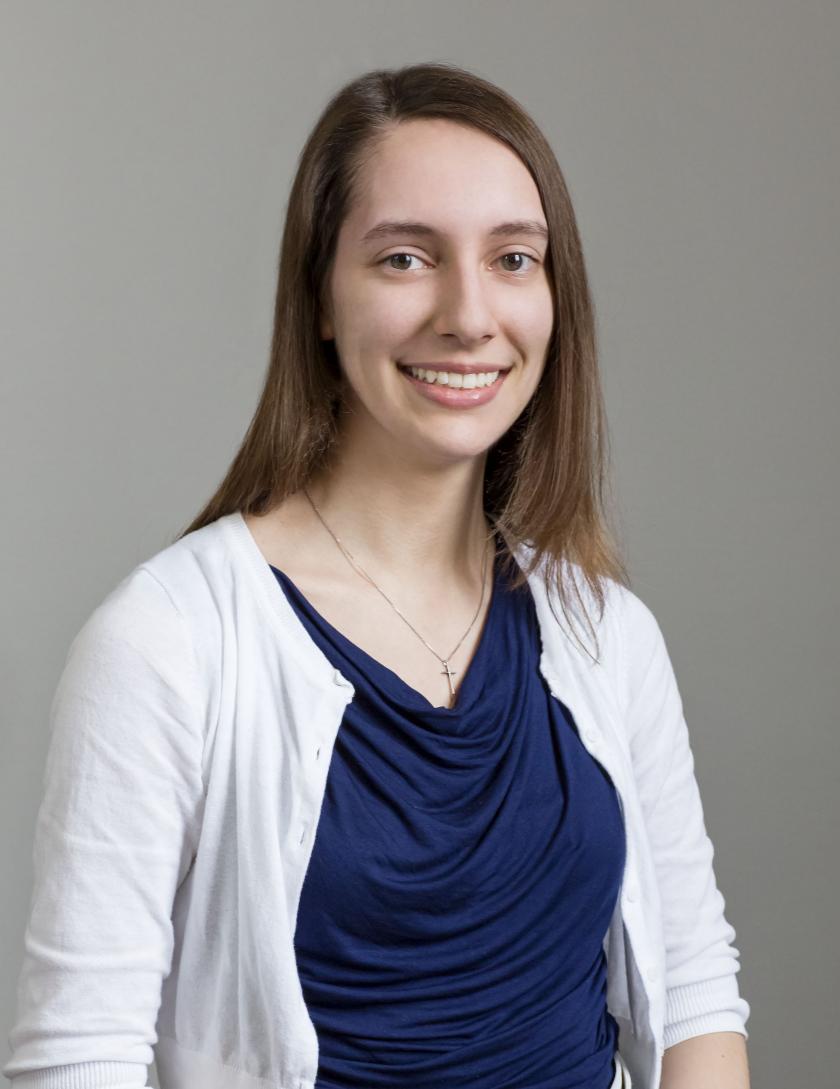
 For many students of rare books and manuscripts, it's the tangible aspects of the occupation that first draw them in—the look, feel, and smell of paper and bindings crafted in another time. But the work of most professionals in this field blends old and new, using modern resources and technologies to connect today’s scholars with historical artifacts. Sarah Hoover (MS '14) experienced this process firsthand while completing her Certificate in Special Collections and practicum experience.
For many students of rare books and manuscripts, it's the tangible aspects of the occupation that first draw them in—the look, feel, and smell of paper and bindings crafted in another time. But the work of most professionals in this field blends old and new, using modern resources and technologies to connect today’s scholars with historical artifacts. Sarah Hoover (MS '14) experienced this process firsthand while completing her Certificate in Special Collections and practicum experience.
Sarah can trace her initial interest in manuscripts back to her undergraduate coursework in medieval studies at Lafayette College. After completing a master's in art history and medieval studies at the University of Illinois, she shifted directions and began working toward a second master's at GSLIS.
"I had been looking at rare book and special collections libraries that had medieval manuscripts already, which was a segue to the LIS field for me. I also had an interest in museums, and the combination of library and museum inherent in special collections seemed like something that would allow me to align my interests," Sarah explained. "I decided that I wanted to go into library science, and special collections was a really good fit."
Sarah's studies at GSLIS included the essentials of library and information science with a special collections twist. In LIS590BCL, Rare Book Cataloging, she and her peers cataloged materials from the HathiTrust Digital Library, a collaborative multi-institutional repository working to preserve the cultural record and maintain accessibility for future scholars. In LIS590EXL, Planning, Production & Practice of Library & Museum Exhibitions, she created an exhibition catalog of University Library books on Stuart-era coronations and royal ceremonies in England.
During her final semester at GSLIS, Sarah completed her practicum experience at the University's Rare Book and Manuscript Library (RBML). Her main project was to catalog the library of American novelist, short-story writer, and playwright Sinclair Lewis. Many of the sixty or so volumes she handled weren't exactly what one might expect to see in a rare books library.
"Most of the books were from the twentieth century, with a few from the late nineteenth century, so many had copies in the main stacks as well. It was really interesting to see the different challenges that came up with records. Even though they were relatively modern books, there were a lot of unusual scenarios," Sarah found.
For example, among Lewis's collection were single volumes of multivolume sets, items that differed from editions in other University Library collections, and one book containing captions in multiple languages. A couple of Lewis's volumes included handwritten notes to and from him, and one even included an annotation in the form of a lipstick print, something not often considered in cataloging classes.
Another of Sarah's projects at the RBML involved transforming her previously created coronations and ceremonies print exhibition into an online format. "I'd already done the research on the items and written up descriptions for them, so I had to start looking at ways of turning it into an online exhibition." She became familiar with Omeka, an open-source web publishing platform for scholarly displays and worked with a developer to perfect the details of the exhibition and add a timeline element.
"It was really helpful for getting on-the-ground experience," Sarah said of her practicum. Being part of the library’s cataloging team, problem-solving using the library's systems and software, and the mentorship provided by the RBML staff prepared Sarah to take on the challenges of working in the multifaceted field of special collections, whatever they may be.